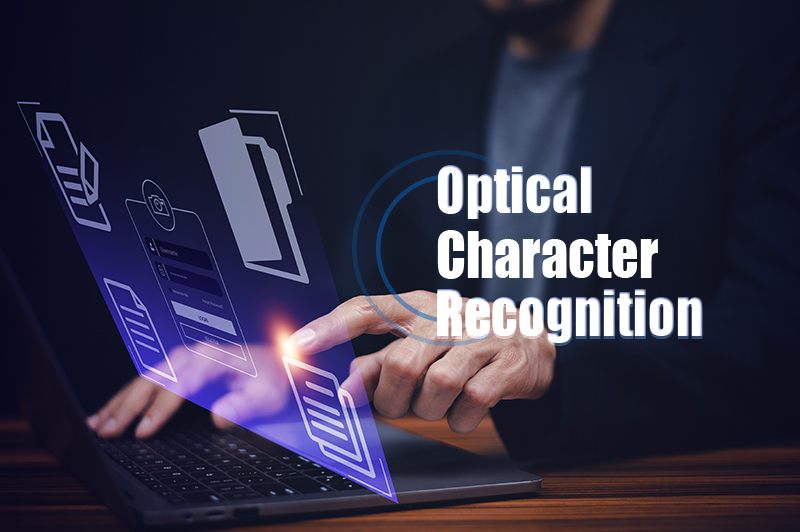Managing paper documents is time and resource consuming. Scanning paper documents makes records accessible and manageable on electronic devices, and improves workflow and process efficiency. However, electronic images of documents such as PDFs are not editable or searchable, which limits their use. Screen readers and other assistive technologies cannot interpret the structure of documents that are saved as images or read text from images. Optical Character Recognition (OCR) extracts data from scanned or image based text files such as PDFs and converts it into machine-readable text that can be edited, formatted and searched. Business process outsourcing companies provide OCR solutions for a wide range of industries. Let’s take a look at the top uses for optical character recognition.
Benefits of Using OCR technology
- Makes documents searchable and accessible
- Provides accurate, up-to-date information by allowing editable data
- Reduces physical storage space
- Cuts costs
- Improves and speeds up workflows
- Automates document storage and processing
- Enhances data security
Key Applications of OCR
- Banking: OCR plays a key role in industries like banking and insurance. With OCR and machine learning tools, banks can instantly capture and extract customer information from ID documents and quickly identify candidates for account opening and loan applications. Manually entering details from a cheque into a digital system is an error-prone process. OCR scans the cheque and instantly recognizes and verifies all the elements such as the serial code, account number of the person, IFSC Code, the amount entered and the signature. The information is then automatically inputted into their assigned columns in the selected account. OCR speeds up cheque processing, statement processing, enhances system security, and reduces errors and operational costs. Handwritten text recognition using deep learning AI techniques is one of the latest applications of OCR in banking.
- Insurance: OCR simplifies and speeds up many processes in the insurance industry. Scanning forms using OCR technology eliminates manual data entry, and allows insurance agents to quickly examine policy documents, scan claim forms, and respond faster to client queries. OCR also allows consumers to compare insurance policy pricing, coverage descriptions, and predetermined monetary caps in insurance agreements to decide on the best option for them.
- Legal: OCR makes important information quickly accessible in legal documents. Searching for and finding specific data like a date or a clause is a difficult task if documents are image files. With OCR, the content in documents can be easily searched to find such information. By supporting data mining and studying patterns and trends in previous cases, OCR allows law firms to serve clients faster. OCR-driven document management also increases accuracy of the information stored.
- Healthcare: In healthcare, OCR systems based on AI are driving change in many processes. OCR makes it possible to digitize and store scan reports, treatment history, hospital records, insurance records, x-rays, stores of supplies, etc. With text recognition and data capture technologies, information in medical reports, prescription forms, patient records, and letters can be obtained with just one click. This makes data quickly available in an emergency, which not only improves care delivery but also eases pressure on the healthcare team. OCR technology also automates claims data entry by converting the scanned forms into machine-readable text, while improving accuracy with data validation checks.
- Retail: OCR can also significantly improve retail operations by enabling scanning and extraction of relevant information from invoices, purchase orders, bills of payment, packing lists, and more. OCR converts data into structured format for easy, fast and end-to-end data processing. OCR captures data from IDs and loyalty cards and stores it in the company’s applications and database, supporting age verification, loyalty card registration, identity verification, and more. With OCR, customers can now redeem vouchers on their mobile phones by scanning for serial codes.
- Government: Dealing with endless information in analog or unstructured format and electronic records can be difficult for government departments and agencies. By converting these documents to useful, searchable information, OCR improves government services. With recognition technology, departments scan and find out what’s written on tax returns, license forms and other proprietary documents.
- Logistics: Manual processing of large volumes of logistics documents is a time-consuming and error-prone task. Even if documents are converted into PDF format and other printable formats, it is difficult for users to extract the required information. OCR automates data entry, removes risk of errors by verifying the captured data, and streamline handling of bills of lading, invoices, and packing lists. It makes storage and sharing of data more efficient, and ensures faster processing of documents.
- Tourism: OCR also finds application in the tourism industry by enabling data from personal and travel documents to be read and transferred into various business applications during the hotel registration process. As passports and other documents can be scanned and verified in seconds with OCR, booking processes have become fast and convenient. Hotel guests can check-in automatically by simply scanning their passports to a hotel’s website or mobile app.
BPO companies provide document conversion services that include Optical Character Recognition using latest technology. Partnering with an expert can ensure accurate, cost-effective OCR solutions and clean-up in quick turnaround time.




